Mike Gearing is a legend of the New Zealand drag racing scene, having been involved from its formative years through to the present where he helps Reece Fish with the Fish Family Racing Top Fuel dragster.
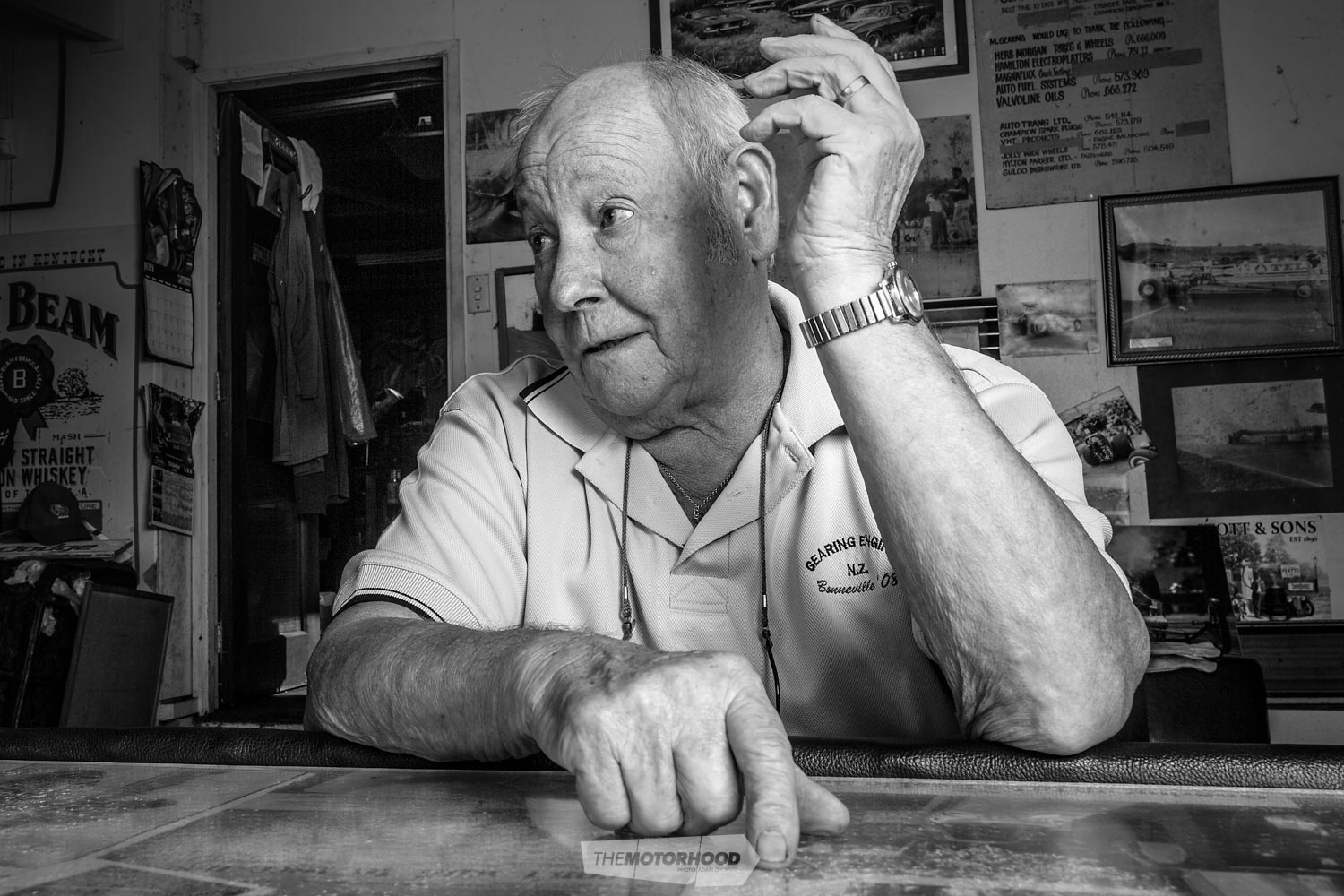
In the late ’60s and early ’70s, Mike was involved with the NZHRA committee that would eventually enjoy success in organizing the development of Meremere Dragway — New Zealand’s first purpose-built drag strip. From there, Mike effectively dived head-first into drag racing, purchasing a Grahame Berry–built dragster frame and a 392ci Hemi that he rebuilt for nitro. From racing his hot rod through to the pinnacle of competitive drag racing, it didn’t take long for Mike to whittle his own ETs down to the low seven-second zone — a perfect place to begin this small extract from the interview in the latest issue of NZV8:
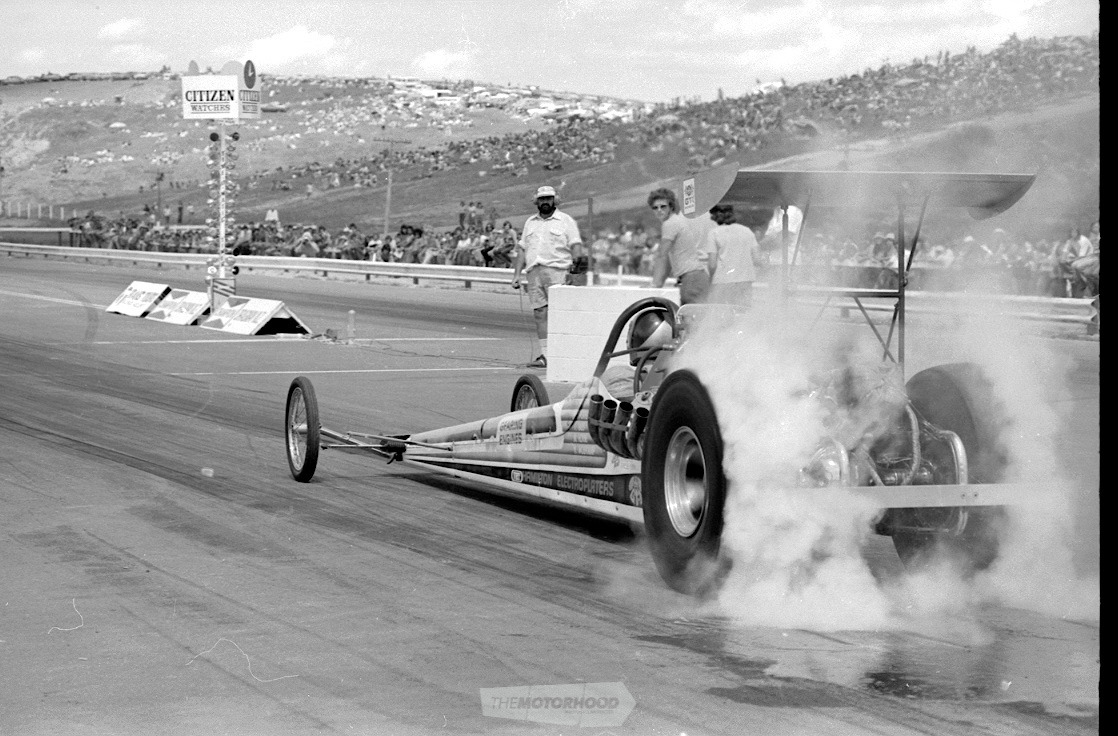
Was anyone else running that quick back then?
No … it was the fastest car for three years in a row.
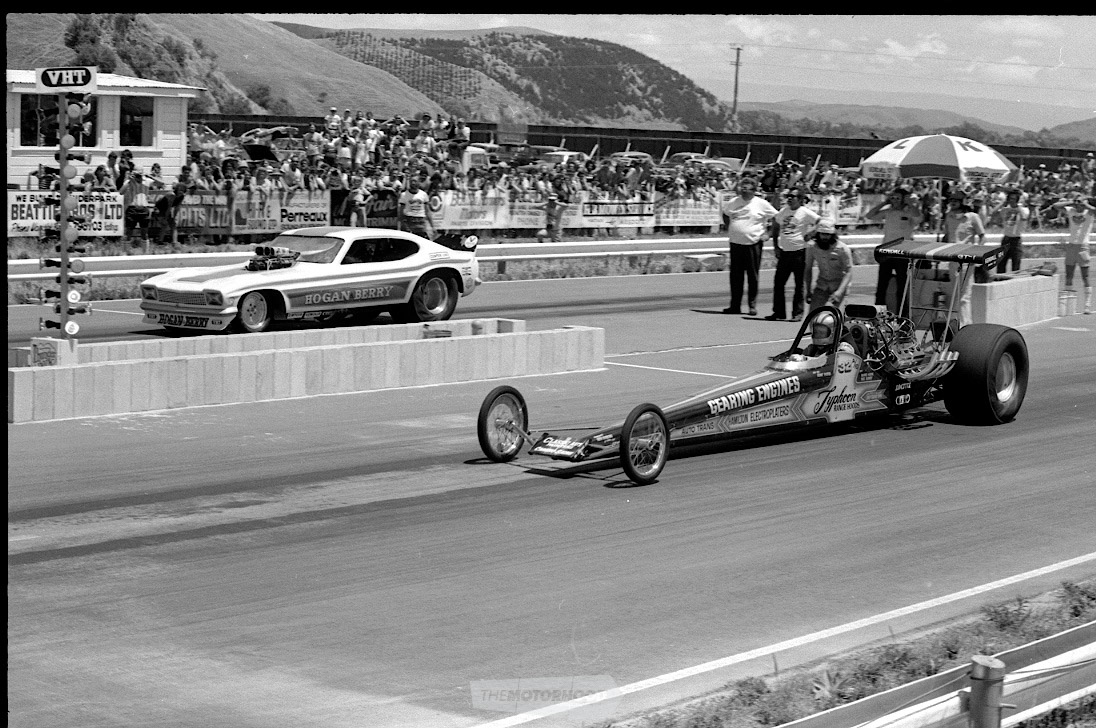
So everyone else was playing catch-up?
Yes, we were all learning. That’s another thing I’ve thought about that time. We didn’t have a drag strip — a proper drag strip, so when we did get a drag strip, it was the beginning of proper drag racing in this country and everybody was starting equally. The smarter ones would learn a lot quicker than the not-so-smart ones.
The Meremere track was hard on the cars — you’d bend stuff, and you’d come back bruised. I had a helmet, it was painted with a fancy paint scheme, and the paint got rubbed off each side because you’d bang your head around on each side of the roll cage. You were seeing stars when you went through the traps, but you get hooked on it. I’ve told this guy [pointing to Reece Fish] that nitromethane is dangerous. It’s more dangerous than any drug!
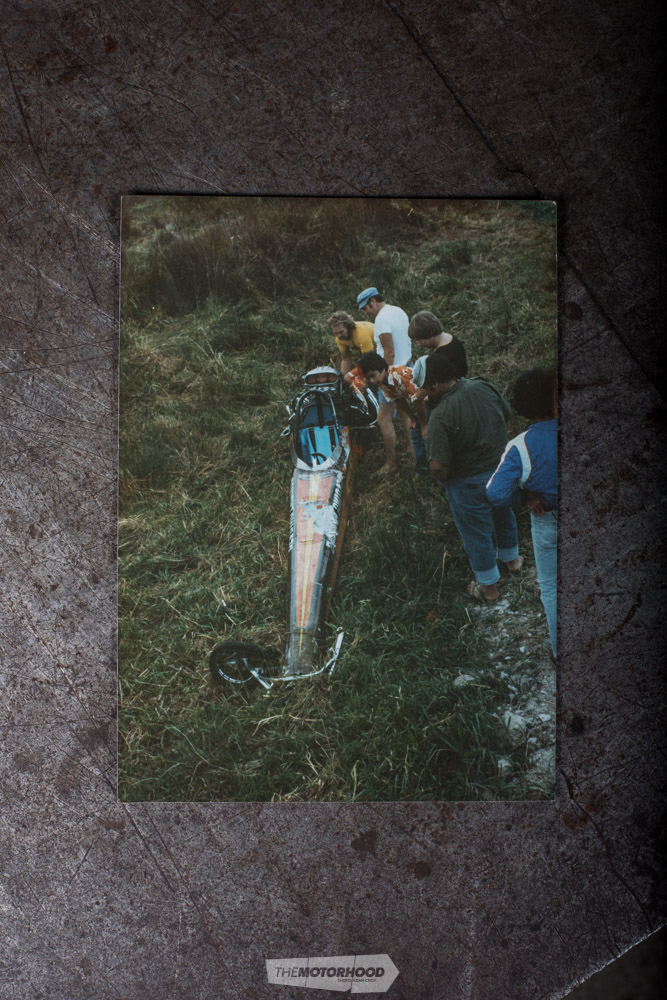
When my first race car got destroyed, we were the lead feature car for the last race meeting of the season … ’77, ’78, or ’79, and I’d blown the nitro motor up the previous meeting. So I put together an alcohol stroker motor, a [3]54, which was stroked to about 400 inch, and I had the block sonic tested for wall thickness, and it came back with absolutely uniform measurements — all the cylinder walls were exactly the same thickness. I was using a scientific testing laboratory out in Onehunga for the sonic testing, and they screwed up. The engine lasted two runs. I was with my crew chief, and we took it down for testing on Saturday, with racing on Sunday — there’s a photo somewhere — I let the crew chief drive, as he’d busted his balls on the car, and he deserved a ride. I took the car down the strip first just to check it out, and there was no timing or ambulances there, just some workers working on the race track. I did one run, came back, fuelled it up, did the chute, strapped him in, waved him off … two seconds later, he just drove off the race track and totalled the car. The engine blew up, and back in those days we used to run water in the block. So a rod came out, punched a hole in the block, and put the oil and water under the tyres and he just drove the car off the track. He got a blood nose, that was all, but it [the car] was knackered. Turned out the block had massive core shift and one cylinder collapsed
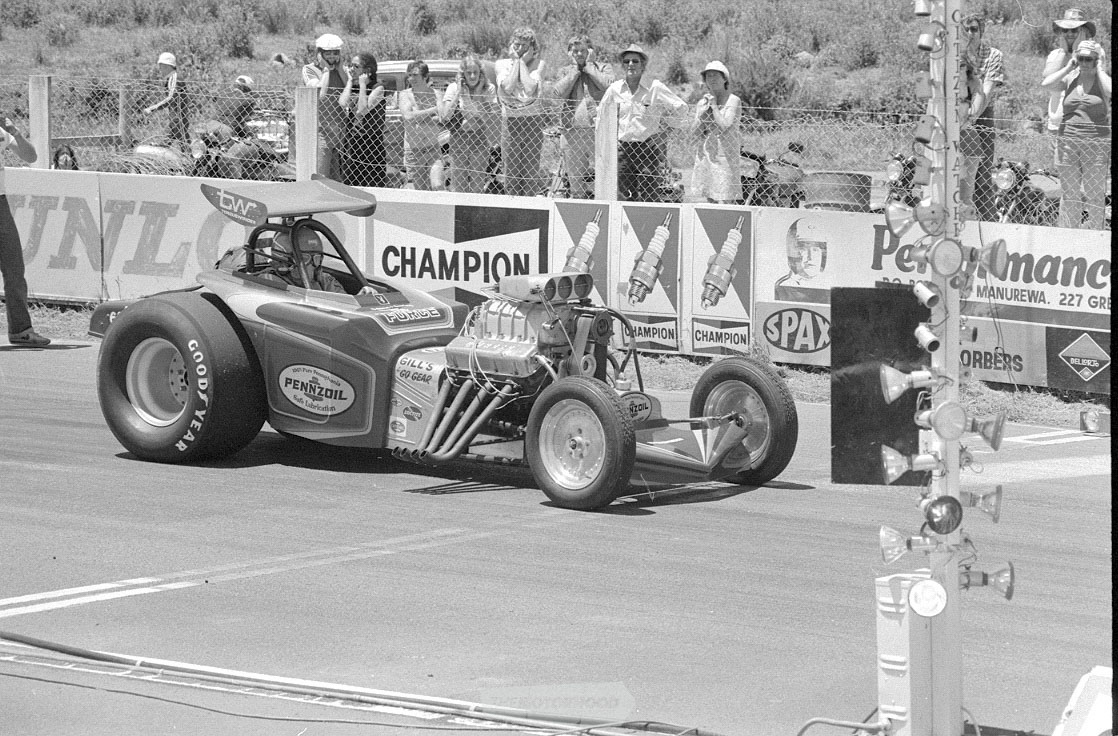
Wow. Did you go straight from there to your second rear-engined dragster?
I didn’t have a car to race, but a good friend of mine Kevin Dolores, had an injected Chevy Altered. He wanted to put a blower on it, but his wife wouldn’t let him drive it with a blower on it, so he asked me if I would rebuild the motor and drive the car.
So I rebuilt the motor, and it was just a regular big block Chev — the bores were worn, which was the downfall of the whole thing. We took it to Meremere, his sponsor, Pennzoil, was there and he called it The Force … PennzForce, because the Star Wars movie had just come out. In the process of putting the car together, we didn’t know it, but the centreline of the crankshaft and the diff were out of alignment. When you put your foot in and nailed it, you’d get total loss of vision — the car was shaking so badly, you couldn’t see. But he had his sponsor there, so we did one run — 10 seconds at 100mph, just on and off, on and off, on and off.
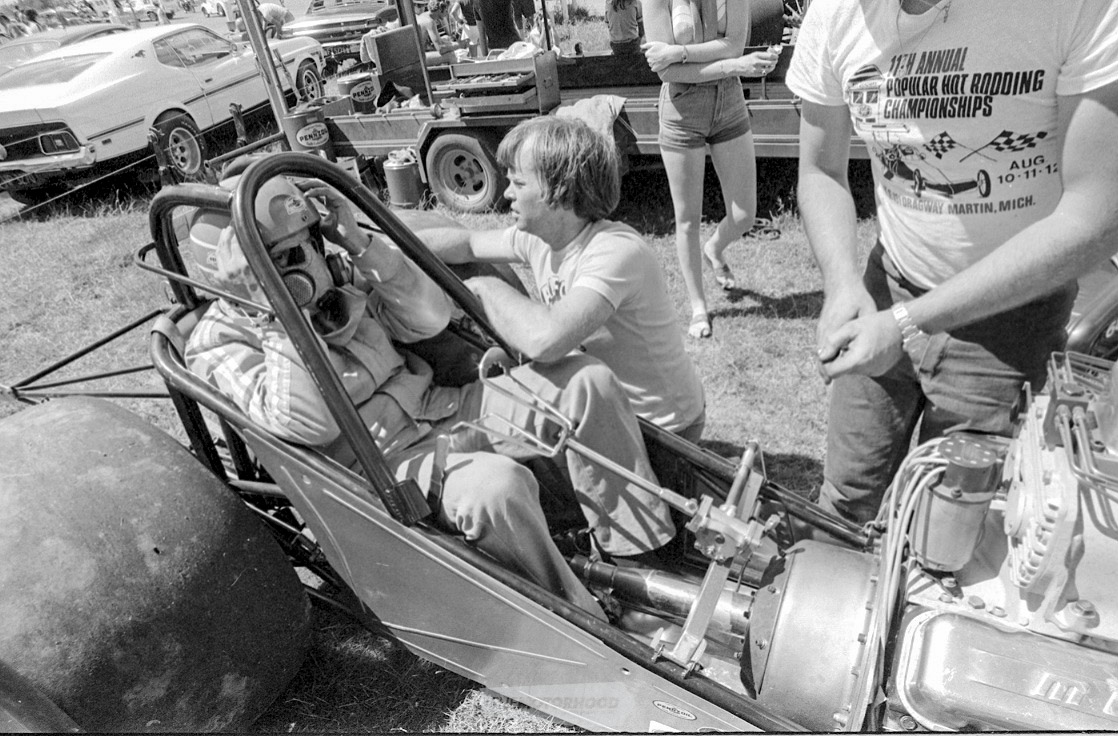
That was the first time we tried to run it. The car was built to suit Kevin, who was shorter in the body than me, and when I did my first burnout, the roll cage was pushing onto my helmet and it came down over my eyes, so I couldn’t see.
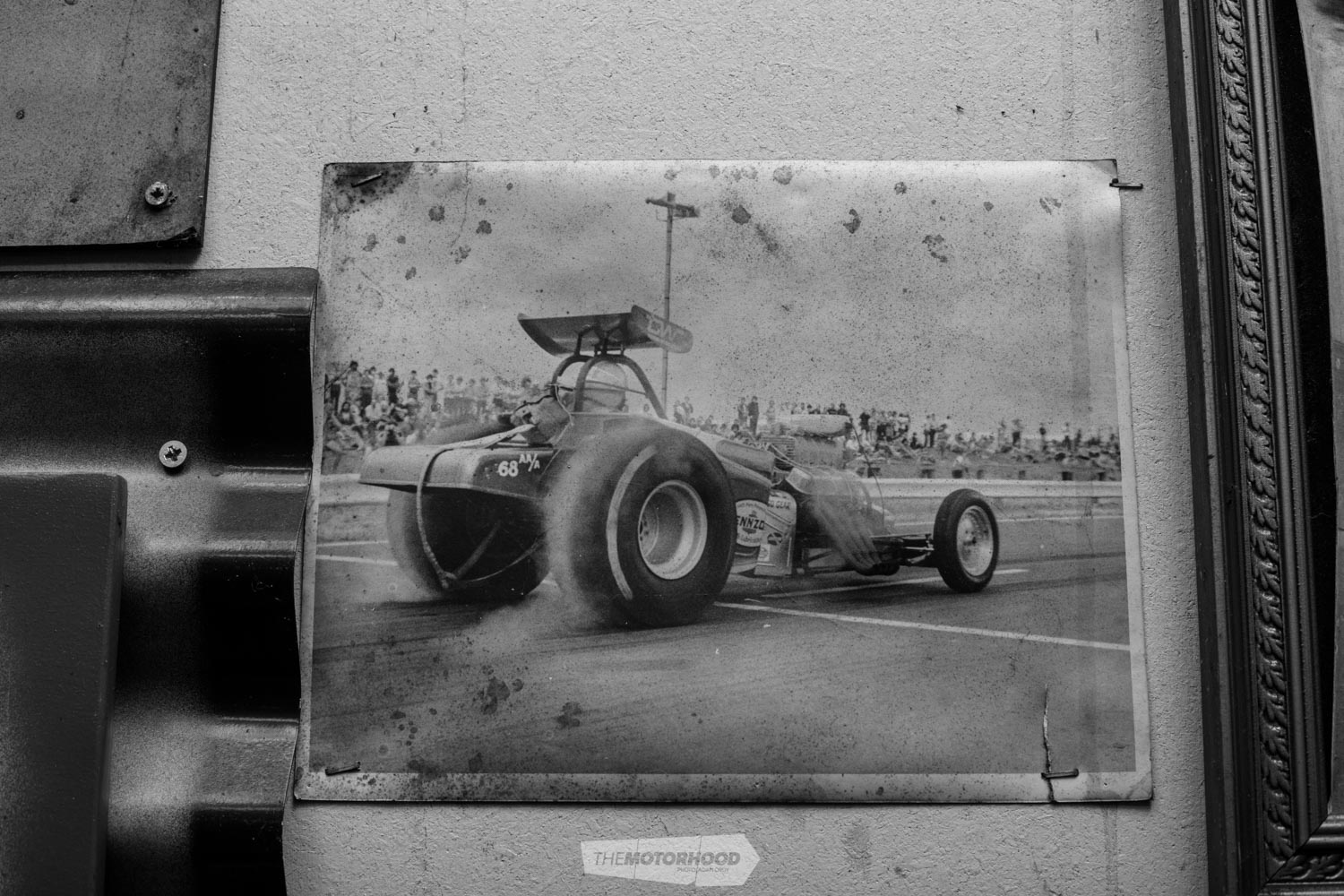
That’s still pretty quick, running a 10 like that — not being able to see; just on off, on off, on off …
Hmm, yes, I suppose. I was used to running 7.3s prior to that. Kevin’s Altered had Moroso stamped rocker covers. You can only use screws and a screwdriver tightening sequence, so you can’t bolt them down. And the engine was so tired, that if you look at this photo here [Thunderpark burnout] you’ll see this haze coming off the headers, because the oil was starting to leak out of the rocker covers. It was pressurizing the crankcase, pushing oil to the top of the motor, and trying to force its way out of the weakest gasket in the engine, which is the rocker cover gaskets. So I left the start line and it ran an 8.20, I think, at 184mph or somewhere around there. Just before the finish line, about the 1000-foot mark, the gasket blew totally, covered me in oil and I couldn’t see, so I hit the chute … I waited for it, hit it again, no chute, can’t see, can’t stop …
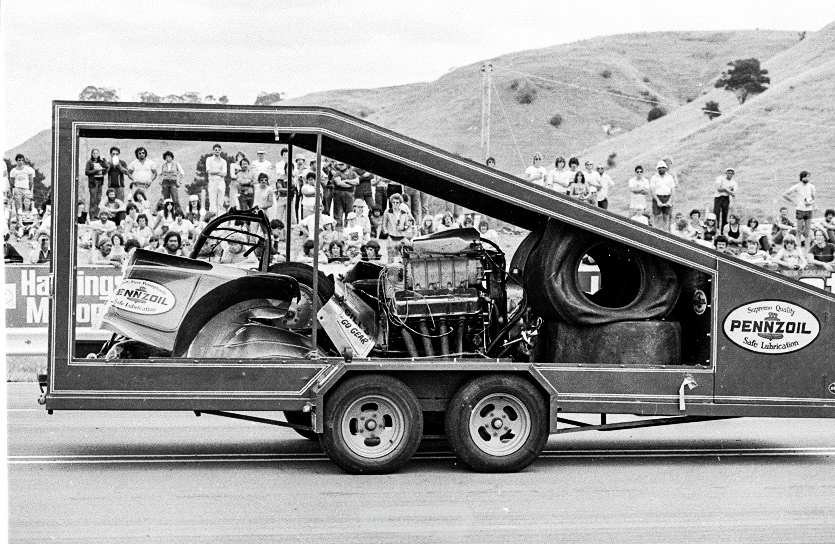
Back in those days, we used to switch the engine off with the ignition, but it was running so hot that it kept on running, ’cause there was fuel there. So the engine just kept on running, and I ended up going off the track, up a little hill, and it launched into the air. I couldn’t see, and the helmet had an opaque face shield which was covered in oil, and it changed from medium to light, ’cause the car was going up in the air. It went end over end 14 times. It collapsed the roll cage, and I was crushed inside it, so it broke my back …
To read more of our interview with Mike Gearing, get yourself a copy of NZV8 Issue No. 146, available in stores or at Magstore. We will have part two in the following issue, so make sure you watch this space.
We must give our thanks to Mike and Norma Gearing for making the time for the interview, Reece Fish for his participation, and John Lindesay for arranging it. Allan Porter also supplied a huge number of historical photos, for which we are thankful, and a few can be viewed in the gallery below.




